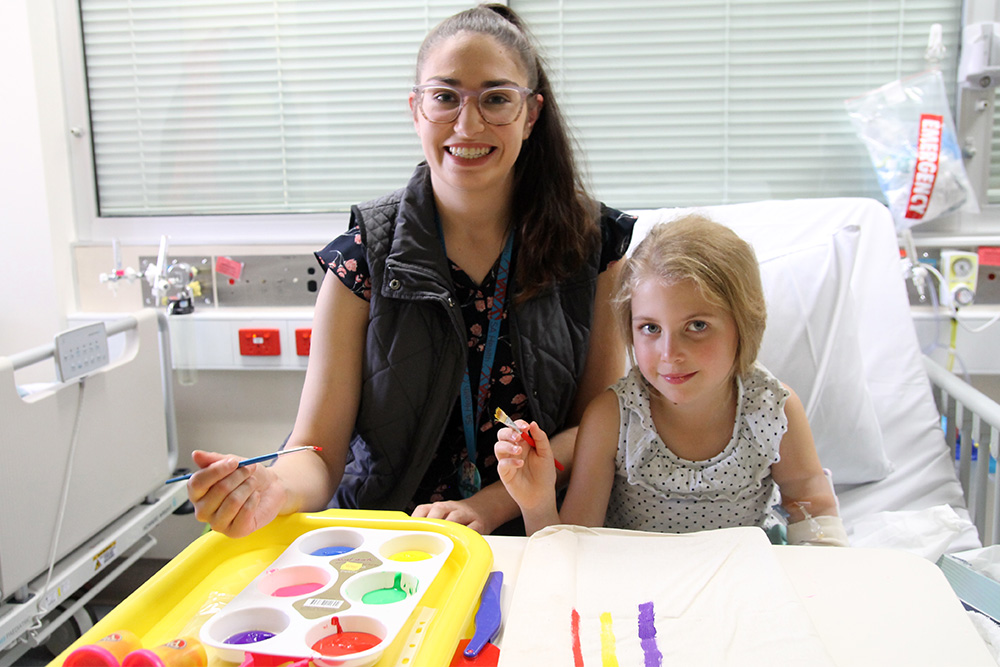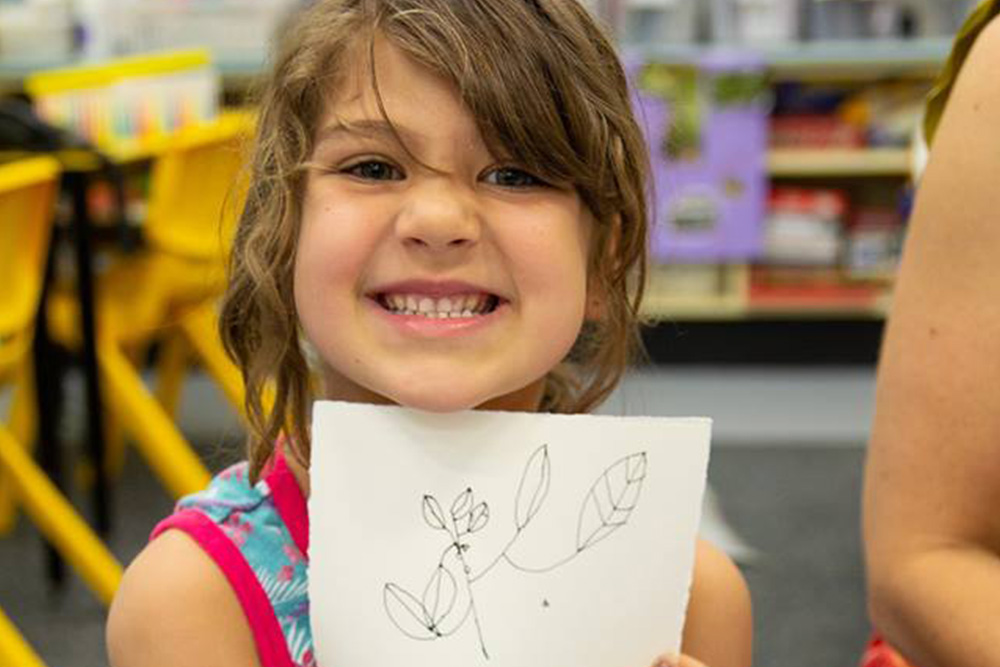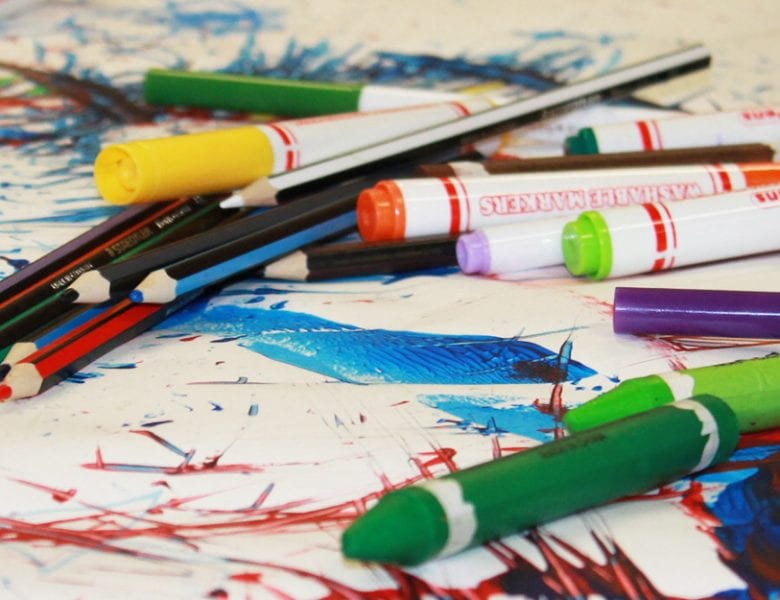Play Therapy: More than arts and crafts
There is a group of health specialists in the Women’s and Children’s Hospital who work closely with patients and their families. They aren’t nurses or doctors and instead of a stethoscope around their neck and medicine in their trolley, you will find them carrying board games and colouring-in pencils.
They are the Play Therapists, and thanks to the generosity of WCH Foundation supporters – we are proud to fund the Play Therapy program.

Leeza and patient Lina.
Leeza is one of 10 Play Therapists in the Hospital. Through play and activity, she creates an interactive and bright environment and helps to reduce the children’s stress of being in Hospital.
Leeza shared with us the impact her work has on patients at the WCH and why Play Therapists play a vital role.
“Play Therapists are in the unique position where we are a part of the hospital environment, knowing the processes, systems and having rapport with the nurses and doctors, whilst also having the ability to create a fun environment for the patients.
“We have trusting relationships with the patients formed not only by creating that fun environment, but by helping them to gain control over aspects of their treatment.
“I think it is so important for kids in hospital to have some control where possible, because for most of the time they have none.
“As part of the treatment for burns patients they must have their skin scrubbed, which can be quite traumatising. I can’t change this as it is a key part of their medical treatment, but I can help the patient take back some control and make choices. In the past, I have spoken with the nurses and explained that the patient would like a couple of three-minute breaks throughout the treatment. We then allow the child to let us know when they want to take those breaks, allowing them to take back some control.

WCH patient, Alexis.
“My day at the Hospital begins with organising the children who can go Hospital School. If patients can’t go to school, I’ll organise to have a teacher come up to visit them.
“I then start to visit the patients on my ward. If they’re not infectious they will do activities in the ward’s shared areas. The activities can include art and craft, playing Play Station or board games, and sometimes we watch movies. I always give the patients the choice of what we will do. This is another way I can help the kids have some control.
“Play is not only used to distract the patients from being in hospital and create that fun environment, but it is also used to help patients express their feelings.
“One of my patients, who was eight-years-old, wasn’t speaking to anybody other than whispering to her two-year-old sister. When speaking with the family, I would speak in a manner that was child-friendly saying ‘your daughter is on holiday from talking at the moment’, letting her know it was okay to choose not to talk. This was important in building trust. When kids can’t express their emotions verbally, we use play and with her I used sand tray therapy. When no one else was around, she would draw words in the sand. She then whispered two words to me. I was the first person in Hospital she spoke to.
“I would say Play Therapists are quiet achievers, but I think our job in the Hospital is so important.”
Back to all news


